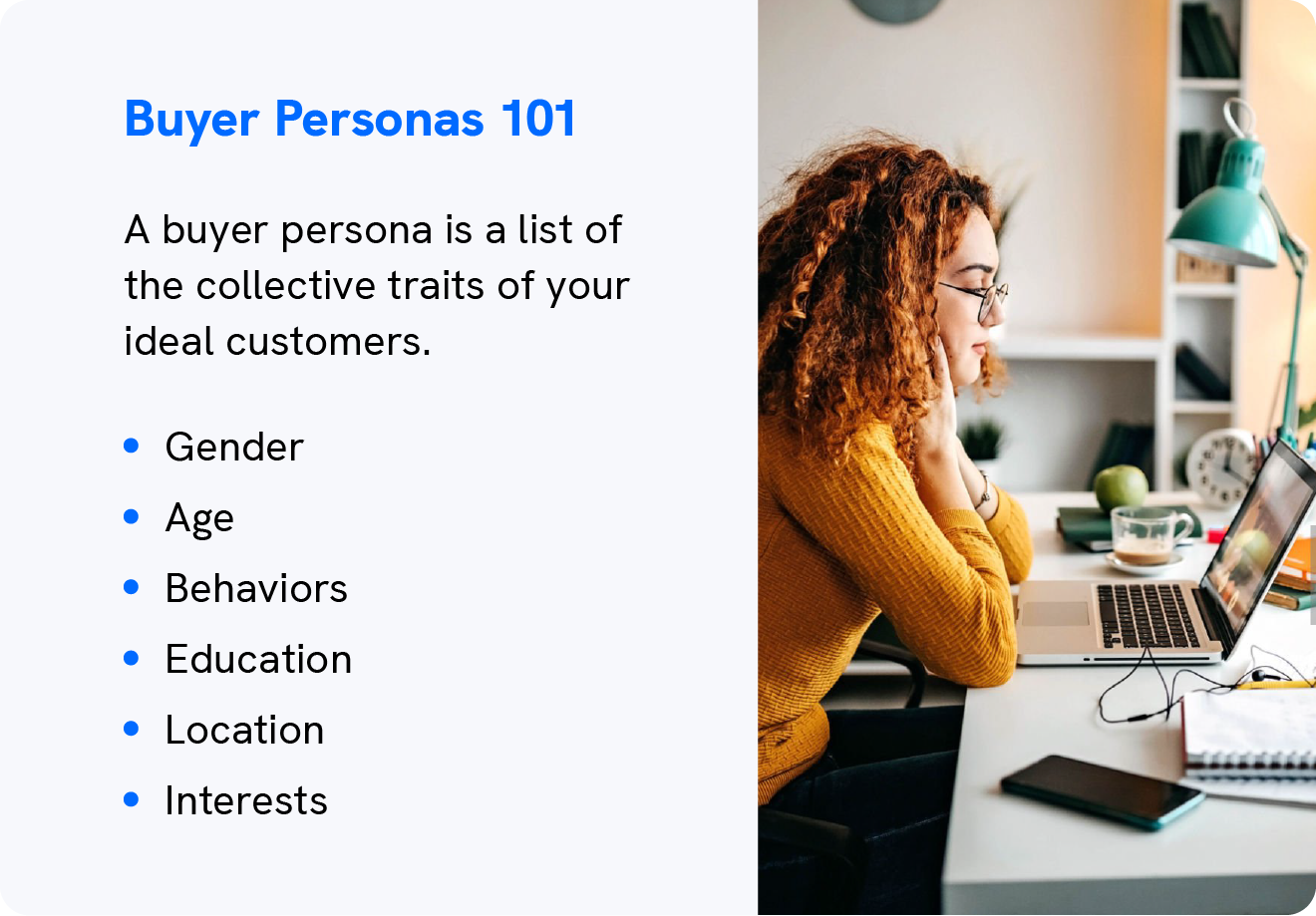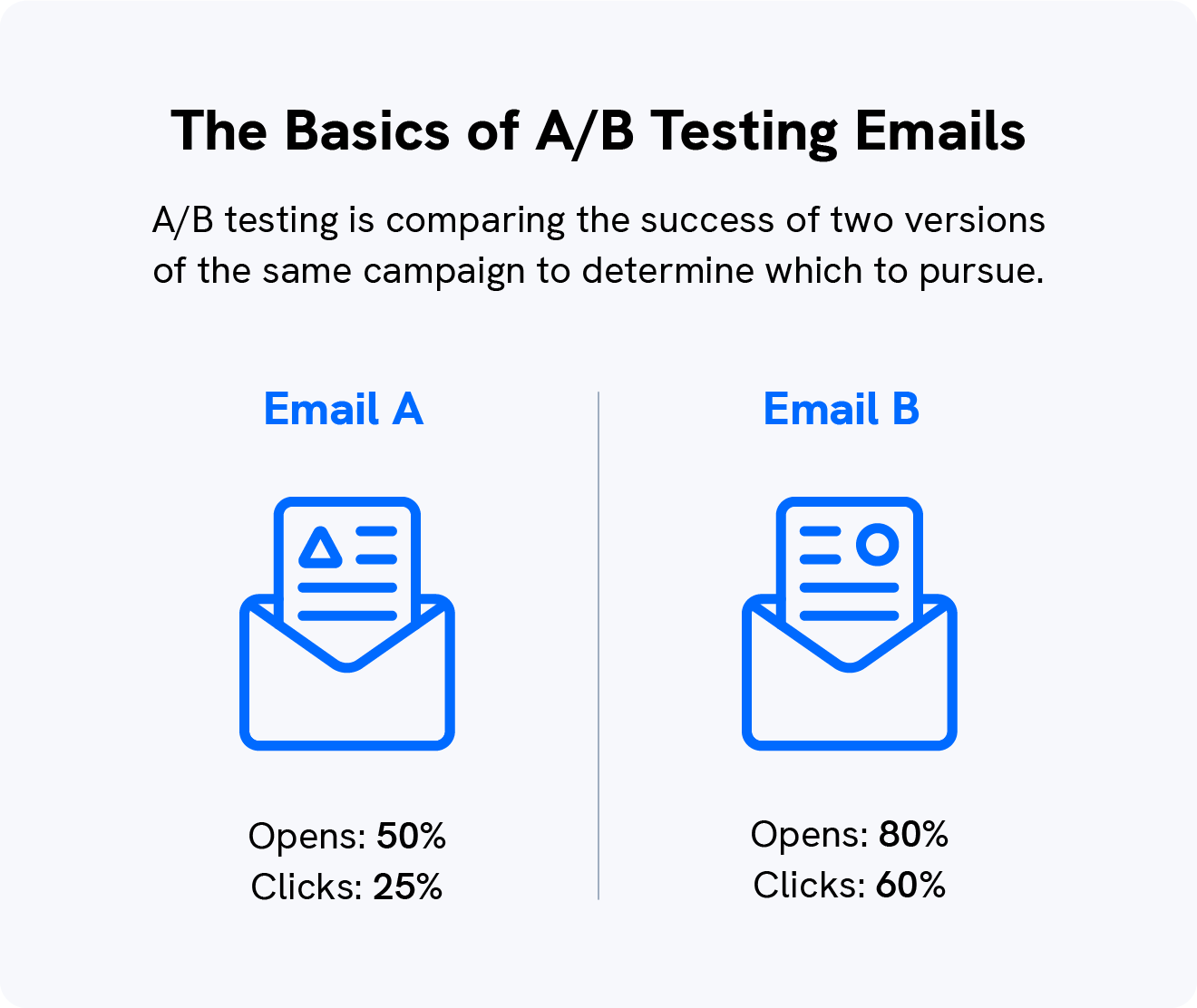You’ve worked hard to create the perfect online course. Spending countless hours researching your niche and spending your hard-earned money on the right equipment — all done in the pursuit of success.
But the truth is, even the best course will remain in obscurity without a solid marketing plan.
In fact, only 33% of clicks go to websites outside of the top 5 search engine results. That is why it is so important to know how to market online courses correctly.
Follow the proven strategies outlined in this guide to get your online course to the people who need it most.
1. Identify Your Unique Value Proposition
Every entrepreneur strives to offer something special to their customers that their competition doesn’t. This is known as your unique value proposition (UVP).
Identifying your UVP will help you know how to successfully market an online course by providing your strongest selling points.
Good UVPs should:
- Capture readers’ attention.
- Be difficult to copy.
- Be summed up in a single sentence.
- Be unique to your service.
Customers need to know why they should choose you over your competitors, so state it on your landing page and promotional material.
2. Create a Buyer Persona
Before forming a marketing strategy for online courses, you’ll need to identify who your target audience is. This is known as a buyer persona.

Since a buyer persona is a list of the collective traits of your ideal customers, it should include comprehensive details. Think about the demographic of your primary buyers, their interests, and their behavior.
This buyer persona will help you to reach your market through targeted advertising, email campaigns, and social media posts. This means you’ll save time and money by targeting the customers with the most interest in your service!
3. Implement SEO Strategies on Your Website
Utilizing proper search engine optimization (SEO) strategies on the website for your online course is a cost-effective way to get it in front of your target audience.
SEO enables your website to rank higher on search engine results pages (SERPs) without the added costs of advertisements.
SEO encompasses a broad range of best practices and is something that you should constantly evaluate. Update your content to match search trends and to stay relevant.
Some of the best ways to improve your website’s SEO include:
- Fast webpage loading: Keep file sizes under 1MB by using JPEG images instead of PNG. Limit the number of on-page ads. Use a web hosting service that optimizes your performance.
- Make it mobile-friendly: The site needs to be responsive for both desktop and mobile users. Design it to function on devices of any screen size.
- Make unique and valuable content: More visitors will come to your site if you are providing content that isn’t available anywhere else. If the content is beneficial, they will spend more time on your site.
- Use relevant keywords: Research which keywords are being used in your niche. Focus on keywords with high search volumes and low difficulty scores.
4. Design a Sales Funnel
A sales funnel is the process a person goes through to become your customer. Identifying the steps they will take will help you to improve any pain points where you might be losing customers and enhance their overall experience.
Every prospect goes through 4 basic stages to become a customer or — in the case of online courses — student.
- Awareness: This is when a person first learns of your product or service. Your online course marketing strategy will have the biggest impact in this stage.
- Interest: Once a person finds your online course marketplace, they will research your product to see if it is the best option for their needs. This is when your on-site content will have the greatest influence.
- Decision: The prospect will evaluate the different options regarding price and packages. Your sales pages will need to be sufficient enough to answer their questions and tip the scales in favor of making a purchase.
- Action: Your prospect will either become a customer or a missed opportunity. Regardless, you should set up retargeting campaigns for both scenarios. Retargeting current customers will improve the retention rates and sales of other products. Retargeting failed prospects will keep the door open for future sales.
5. Create Content Silos
A content silo refers to the structure of your website based on keyword subjects. Your silos give search engines an understanding of what your content offers and how it should be classified.
The structure of your website can be thought of as a flow chart. Every link should lead to relevant information so visitors know what to expect when they click through.
Dedicate each content silo to a specific category while keeping each of its subcategories consistent. Content silo categories can include:
- Locations your services are offered.
- Products.
- Blog topics.
6. Research Your Competition
Taking the time to analyze your competitor’s website and marketing tactics can help you form the strategy for your online course promotion.
Here are some questions to keep in mind during your competitor research:
- Are there any keywords that they are ranking for that you should be targeting as well?
- Are they utilizing paid ad campaigns? If they aren’t, is it because it’s too expensive, or is that an opportunity that you can take advantage of?
- Are there any websites linking to them that could also be linking to you?
- How do they promote their course on social media? Which posts get the most interaction?
A lot can be learned from what your competitors are doing right or wrong. Piggybacking on their experience can lower the curve for learning how to sell your online course.
7. Curate an Email List — And Use It Wisely
Email can be a great avenue to form a relationship with your potential and current customers. But you must execute it properly to draw in the just-right leads. In other words, don’t spam your email list.
A successful email marketing campaign is mindful of the customer sales funnel — awareness, interest, decision, and action — and it curates every email for just this.
For perspective, three emails every video business should be sending, including online course creators:
- Welcome emails to drive awareness and interest in your online course
- Regular newsletters to foster interest and guide leads toward deciding on an online course to enroll in
- Abandoned cart emails to invoke leads to act on their online course enrollment
8. Write a Press Release
A press release is an announcement of a newsworthy event or company update that journalists and industry experts find beneficial to share.
If your online course — or an update surrounding your company — is relevant to their interests, writing a press release can bring it awareness.
Be honest and straightforward regarding why your information is relevant. Journalists will be able to see through an attempt to use them for a free ad.
Format your press release correctly from the start to avoid any back and forth with the journalist. Make their job as easy as possible.
For your first announcement, focus on reaching out to publications local to where you are or grew up. They’ll have more interest in celebrating a local success story than a national publication.
9. Promote on Your Platforms
Social media is an important networking tool and can be used for your course’s promotion. Posting about your online course’s release on your personal accounts can be a great way to drum up interest, but creating a business profile is also important.
Some platforms provide businesses with extra tools to track engagement with their posts. For instance, Instagram’s analytics tools can help you determine the best time of day to schedule a post based on tracked interactions.
Engaging with customers and prospects is another great way to build relationships and customer loyalty. When your business pops up in social media feeds, it reminds people of your offerings even when they aren’t actively searching for the product.
The platforms you primarily use will be dependent on your ideal customers. Younger generations use platforms like Instagram, while older generations use Facebook.
The buyer persona you created will help narrow down where you should focus your efforts.
10. Offer Bundled Pricing
Everyone loves feeling like they are getting a deal on a purchase and bundled pricing is a great way to appeal to that feeling.
If your course is made up of multiple sections, offer the option to purchase every section individually or bundle them together for a reduced overall price.
Buying the complete course can be intimidating to a prospect. They may be unsure of what the course consists of, if it is worth the price, or if they will even follow through on finishing the course.
Being able to buy just the first section can nudge the buyer toward completing the sale because the stakes are lower.
Likewise, buying every section at once for a discount presents a cost-saving opportunity. The customer can now feel like they are saving money in the long run by buying everything upfront.
If your course is a subscription option, offer discounts for longer subscription periods. Paying for one month may be right for people looking to test your service. Offering a 10% discount to anyone who purchases a year-long subscription provides more value while also locking them in as a customer.
11. Create Paid Advertising Campaigns
A comprehensive advertising campaign can give your online course a jump start to success while you’re waiting for your SEO strategies to kick in.
Like with social media, you’ll need to know which ad platforms best suit your needs to get the best return on your investment.
Some key advertising terms to know:
- Display advertising: Ads that have graphics, video, audio, or text components that link to a different website.
- Paid search advertising: Text-based ads that appear at the top of search engine results pages.
- Cost per click (CPC) or pay per click (PPC): You’ll be charged every time a user clicks on your ad.
- Cost per thousand impressions (CPM): You’ll be charged for the number of times your ad is viewed.
Google Ads
Using Google Ads can get your online course in the top online search results instantly.
Google has its own best practices you’ll need to apply to your ads before they are approved, but they have a certification course that will teach you the basics. This will give you a firm foundation to begin planning your campaign.
Competitive industries can be expensive to get your ads listed in. If the online course you’re marketing has a low price, the cost for an ad can eat up a large portion of your profit.
Facebook Ads
Facebook ads tend to be more affordable than Google search ads. You can tailor your ad based on data Facebook collects to better target your primary demographics.
One weakness of Facebook Ads is that rather than appearing in search engine results, they appear when prospects are not actively searching for your content — leading to lower conversions.
YouTube Ads
While Google and Facebook focus on text-based ads, YouTube provides the opportunity to advertise through videos. You’ll only pay if a viewer watches 30 seconds or more of the ad.
If your course includes video-led classes, providing viewers with a video displaying what they can expect from you can be enough to pique their interest in what you have to offer.
Because viewers have the option to skip your ad, you’ll need to hook them quickly. For this reason, YouTube tends to have lower conversion rates than Google Ads.
12. Conduct A/B Testing
A/B testing, aka split testing, is the process of comparing 2 versions of the same campaign to measure which is more successful. It can be applied to ads, emails, or web pages.

In an email campaign, option A will have a different subject line, body paragraph, or call-to-action from option B. It’s best to have only one difference in each variation to more accurately identify the source of the success or failure.
Send both options to prospects, then record the resulting open rates, clicks, and responses. The option that performs better is adopted.
It is important to constantly measure your campaign’s success to know which areas can be improved. Online course marketing strategies are constantly changing, and a campaign that performed well in the past may underperform in the future.
If you rely on outdated methods for engagement then you give your competitors the opportunity to outperform you.
13. Link to Your Course in Emails
With fewer interactions being done face-to-face, your business cards are likely gathering dust. If you’re regularly messaging people relating to your subject matter, your emails can serve as a business card too.
Including a link to your course in your daily emails makes people aware of its existence in casual correspondence. Simply placing the link below your signature can be enough to bring awareness to it.
Even if the recipient of the email falls outside your target audience, they may forward the course to someone who is.
14. Get Active in Local Groups
There are likely groups in your community who are interested in your niche. Show up to these events as a speaker or an attendee.
These events provide a unique opportunity to sell your course directly to your target audience.
Meeting them in person and forming relationships can drastically increase the scope of your influence. Event organizers may take a fee or a portion of the sales you make there, but the gained publicity may be worth it.
If no local groups exist in your area, try creating one that relates to your expertise. Websites like Meetup make it easy to network with others and organize events.
15. Consistently Release Content
If you’re looking to turn your online course into your main revenue stream you’ll need to release content consistently. This applies to both the course content that you offer and the promotional content, like newsletters and blog posts.
Pick a day of the week or month as release dates for your content. Whether it’s your blog or the next section of your course, it’s a good practice to give your customers reliable expectations.
Your website needs more than a backlog of old posts for it to be recognized as beneficial. Blogging, vlogging, and social media posting need to be consistent for the search algorithms to recognize them as active with interactions.
Similarly, once you have gathered a significant fanbase, you’ll need to keep producing content to hold their attention. If you cannot meet their demands, they’ll seek services elsewhere — and that runs the risk of them never returning.
16. Engage With Your Customers
Holding your customers’ attention is a lot easier when you are actively engaging with them. Making them feel like more than just a revenue stream breeds customer loyalty and provides stability to your business.
Take time to respond to comments and answer questions. This practice also serves as quality control, as you may become aware of issues that slipped past you previously.
Look for opportunities to engage with your customer on:
- Your social media posts.
- The comments section of your blog.
- The comments section of YouTube.
- Consumer review websites.
Outside of promoting through your primary social media accounts, there are many smaller forums that can serve as great marketing venues. Find forums that are specific to your industry and share beneficial content and advice with its users.
This marketing strategy for online courses is free, and it gives you the added benefit of keeping your finger on the pulse of the industry.
If a new trend is arising — or something about your course is out of date — you can be one of the first movers in sharing that information.
17. Partner With Other Content Creators
Not all content creators need to be seen as competition. Partnering with other creators provides an opportunity to get your work in front of their fans.
When executed well, you will both gain followers rather than lose them.
Some markets are very welcoming to these types of arrangements, while others are a bit more protective. It can help to reach out to related market niches that have overlapping interests but are not directly competitive.
Think of a nutritionist writing for a fitness coach. The focus of what they create is different, but their end goal is about teaching a healthy lifestyle.
You could each offer to make a video on a topic of your expertise and publish it on the other’s course. Think of it like a guest lecturer in a college class.
If another content creator is an authority in an area, it may be better to give them the reins. Your audience benefits from diverse content and the other creator gets more attention. The same applies to you producing content for someone else.
18. Add Customer Testimonials
Sometimes having an outside endorsement can do more good than anything you could say. Having testimonials from real customers appear on your webpage increases your credibility in the minds of strangers.
Your testimonials can come from people other than celebrities and still be effective. Just having comments by real people can be enough to improve your sales conversion rate.
Since a prospective customer may have no reason to buy your course over your competition’s, the testimonials you include should be identifying that for them. You can use your unique value proposition to guide which testimonials will have the greatest impact.
19. Become a Source on HARO
Help A Reporter Out (HARO) is an online resource reporters use to quickly gather quotes from professionals. Reporters may use your quotes in articles they’re writing to increase the article’s credibility.
While Help A Reporter Out may not result in backlinks to your website directly, becoming a source will bring your work to the attention of potential customers. You can even link to the article from your own page to prove you are legitimate.
Having organizations reference you can increase your credibility and, in turn, your consumer base and students enrolling in your online course.
20. Become a Poster Child
A poster child is a success story a content creator can use to bolster their reputation. If you used the methods of a particular source to create your online courses or to market online courses successfully, telling them about it can lead to a feature article on their platform.

This is another mutually beneficial arrangement. There are many scammers in the blogosphere, so having verifiable proof that their advice works can improve their reputation too.
If you plan to take this approach, it is a good idea to take notes and record information along the way. Having behind the scenes documentation of your journey and detailed notes will make your story much more appealing to share.
Sometimes sharing failures can be even more enticing than successes. Share mistakes you made along the way. Let them know if you wasted money on ads for the wrong platform and provide a better alternative so others don’t make the same mistake.
21. Survey Your Users and Followers
Emailing surveys or posting them to your social media accounts can increase engagement and provide you with new ideas.
Choosing your next course’s topic can be a big risk. There’s no guarantee there will be an interest in your content unless you source it directly from your followers. Polling them ensures there’s a demand for it.
You can also use surveys to gauge customer satisfaction with people who are not active in comment sections.
Some people who are unsatisfied with an aspect of your product may not say anything — they’ll simply quit using your service. Directly asking for their feedback may get them to open up.
22. Livestream Special Events
Creating an opportunity for you to interact with prospects in real-time is too good to pass up.
Giving them a glimpse of your personality in an unrehearsed scenario lets them know you’re a real person and not putting on an act.
A live event also creates urgency. If anyone is procrastinating and keeps putting your course off for another day, they’ll be pressured to act on the day of your livestream.
Livestreams do require specific equipment you may need to purchase, like a high definition webcam or camera tripod. Investing in suitable equipment will improve the quality of your content and its overall value to your audience.
23. Make Some Course Content Scarce
It can be tempting to make your content available to everyone forever in order to increase opportunities to make sales. Sometimes, making content scarce can actually increase overall sales.
Have you ever purchased an item you were on the fence about because there were only a few left? Knowing you might be your only chance to own it probably increased the desire you had for it.
Applying limited quantities to one of your courses can have the same effect on prospects. It also creates a buzz around your content when people tell their friends there are only a few purchases remaining.
24. Limit Availability of the Course
Letting people know that only a limited number of people will be able to purchase or participate in a course can spark a person’s fear of missing out. This can actually help your online course promotion.
Rather than focusing on quantity and limiting your maximum number of sales, you could limit availability instead.
Set a time limit for how long a special promotion will be available. There will be no ceiling regarding how many courses you can sell, but people will still be given a sense of urgency to act.
Another way to limit availability is to add content for different membership levels. Making some content for premium members only creates exclusivity.
25. Promote Giveaways
Everyone likes free stuff so doing promotions that require little effort on their part get great engagement. Giveaways can be used to promote your current course or to increase your platform in preparation for future course releases.
Possible giveaways to help market online courses include:
- Raffling off a prize only available to social media subscribers.
- Asking people for their success stories and offering a prize for the best one.
- Telling people to give your course good reviews and, in return, you’ll give one of them a discount in the future.
- Giving your followers a challenge and rewarding the winner with a prize.
26. Start a Podcast
Sitting down to read an article or watch a video can be too time-consuming for many people. However, listening to a podcast can be done while running errands or exercising.
Using a podcast to reach people can bridge that gap in accessibility. Think about what topics are suitable to be covered with no visuals.
How can your lessons be converted to audio-only formats? Is there anyone you can interview that will expand on topics you’ve already covered?
Your podcast can also be a prime opportunity to use your partnerships. Have them on as guests and ask them to share the episode with their fans, which will broaden your reach.
27. Release Free Video Lessons
Sometimes, keeping all of your videos behind a paywall can slow your growth. Releasing the occasional video for free can bring more awareness to your work.
You can release only the first video from your online course, or a short segment if the video is long. This makes it easier for potential customers to find your content and it gives them a low-risk way to experience your course.
Another option is to make videos completely unique from your online course. Cover smaller topics that have less value. You can still pique their interest without cutting into your revenue stream.
28. Post Guest Articles on Blogs
Just as your own blog should remain active, other content creators need to keep publishing to their blogs. Offering to write for them for free can give you publicity and lead to valuable backlinks while costing you nothing but your time.
Search for market-related blogs that accept guest posts and email them your pitch. You can send the editor multiple topics to choose from or a single article written beforehand.
Most editors will outline their submission guidelines on the website. Take your time in crafting your submission so that it is more likely to be accepted. Tailoring every submission to the guidelines of the publisher improves your chances of success.
Build, launch and manage your membership, all in one place.
Wrapping This Up
Creating an online course is a huge accomplishment, but your work is only beginning. Knowing how to market online courses requires specialized knowledge and a lot of perseverance. It may feel like an uphill battle, but effectively using the tools at your disposal can make your job easier and your course a success.
Frequently Asked Questions
Here are some common questions people have about marketing online education courses:
The best strategy to market online courses successfully is largely dependent on your goals.
– Content marketing is best for driving website traffic and generating leads.
– Paid search advertising is best for quick results.
– SEO marketing is best for building your online presence.
– Social media marketing is best for building relationships.
– Email marketing is best for staying in touch with customers.
To promote your online course for free, share it on your social media accounts, apply SEO best practices to your website, and guest post on other websites’ blogs.
You can grow your online course by applying a variety of marketing techniques, like:
– Creating a paid search campaign.
– Applying SEO best practices to rank higher on search pages.
– Partnering with other content creators.
– Guest posting on other websites.
– Producing free YouTube videos to reach new audiences.







